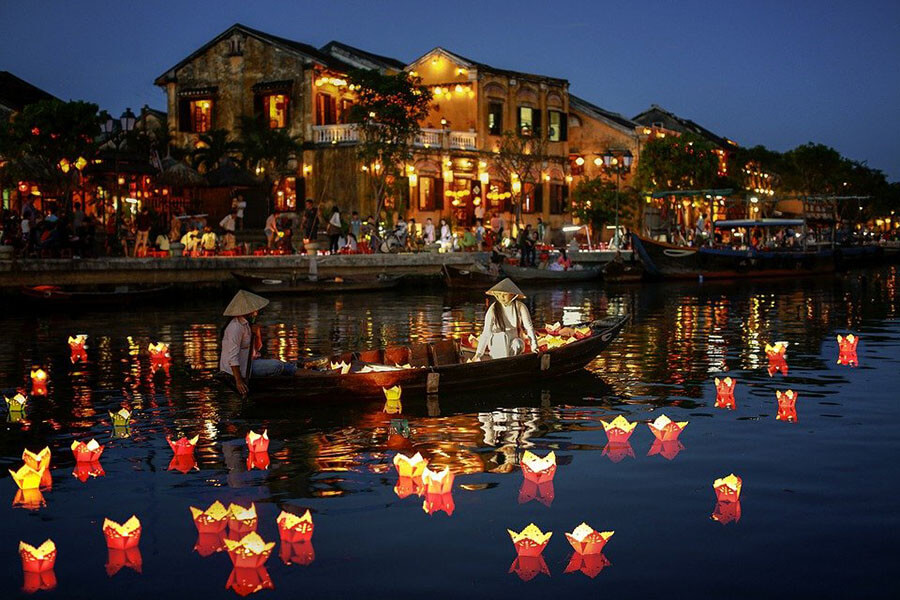Hoi An, Vietnam travel tips
Category
Categories
Popular Articles

Hoi An, a UNESCO World Heritage site in central Vietnam, is an enchanting old town famous for its well-preserved mix of diverse architectural styles from the Japanese, Chinese, and French influences. Once a bustling trading port from the 15th to the 19th century, the tranquility of Hoi An now beautifully facade its historic past. The colorful lanterns adorning its streets, rickety wooden merchant houses, and traditional Chinese assembly halls all make Hoi An worth a visit.
## Best Time to Visit: Plan around the seasons and festivals
The best time to visit Hoi An is between February and April, when the weather is mild and comfortable. Rainy season runs from September to January, while hot summer days can be experienced between May and August. If planning a visit during the annual Lantern Festival happening on every lunar month’s 14th day, a mesmerizing spectacle of hundreds of multicolored lanterns illuminating the night won’t disappoint.
## Climate & What to Pack: Tropical heat to monsoon showers
Given Hoi An’s tropical monsoon climate, packing lightweight, breathable clothing is essential. Bring a raincoat or umbrella if you plan to travel during the rainy season. For sun protection from high UV index throughout the year, do pack a high-SPF sunscreen, hat, cooling scarves or bandanas, and sunglasses. A comfortable pair of walking shoes is also necessary for exploring the town on foot.
## Getting There: Arriving at Hoi An
Da Nang International Airport is the nearest major airport to Hoi An—just a 45-minute drive away. There are various transportation options like taxis, Grab (Asia’s Uber), shuttle buses, or car hires, to get to Hoi An from the airport. Visitors from most countries will need a visa to enter Vietnam, which can be obtained online prior to travel.
## Getting Around Locally: Multiple transport modes
Getting around Hoi An is easy due to its compact size. Walking or cycling are favored ways to explore the town’s charm. Bikes are available for rent at a small fee in most hotels or rental shops. Taxis and Grab services are abundantly available too. For those seeking a unique experience, traditional cyclos or rickshaws offer a leisurely tour.
## Safety Tips: Safe and respectful travel
Hoi An is generally safe, but like anywhere, remain vigilant against pickpocketing in crowded areas. Stay clear of isolated areas at night. Sensible etiquette is appreciated: dress modestly, especially visiting religious sites, and respectful communications. Solo travelers will find Hoi An accommodating and friendly.
## Top Things to Do & See: Diversity of experience
Must-see attractions include the ancient town itself, the iconic Japanese Covered Bridge, and historical homes like Tan Ky House. Participate in a traditional lantern-making workshop, or take a stroll along the romantic Thu Bon River at night. Don’t miss the nearby My Son Sanctuary, an archaeological treasure that was the religious and political capital of the Champa Kingdom.
## Where to Stay: Wide choice of accommodations
Accommodations in Hoi An caters to all budgets. Budget travelers can find comfortable stays in homestays and humble guesthouses, mid-range options include boutique hotels, while the luxury seekers will find world-class resorts flanking the coastlines of Cua Dai and An Bang. The Ancient town and Riverside are popular areas to stay.
## Food & Local Cuisine: A culinary journey
Hoi An offers a culinary adventure with dishes like Pho, Banh Mi, and Cao Lau. For street food, the Central Market is a paradise. Upscale dining can be found along Nguyen Phuc Chu and Bach Dang streets. Do sample Vietnamese coffee in local cafes.
## Cultural & Practical Tips: Before you go
The official currency is Vietnamese Dong (VND), while the official language is Vietnamese. Tipping isn’t mandatory but appreciated. Most plugs are type A, C, or D with a standard voltage of 220 V. Wi-fi access is available in most hotels, cafes, and restaurants.
## Sustainable or Responsible Travel Tips: Conscience travel
Respect local customs and traditions. Use refillable water bottles to cut down on plastic use. Opt for local guides and businesses to support the local economy.
## Personal Travel Tip:
For a first-time visitor, my tip is to slow down. Hoi An is not just a destination but an experience best enjoyed slowly. Allow yourself time to soak in its serene beauty and be part of its living history.










